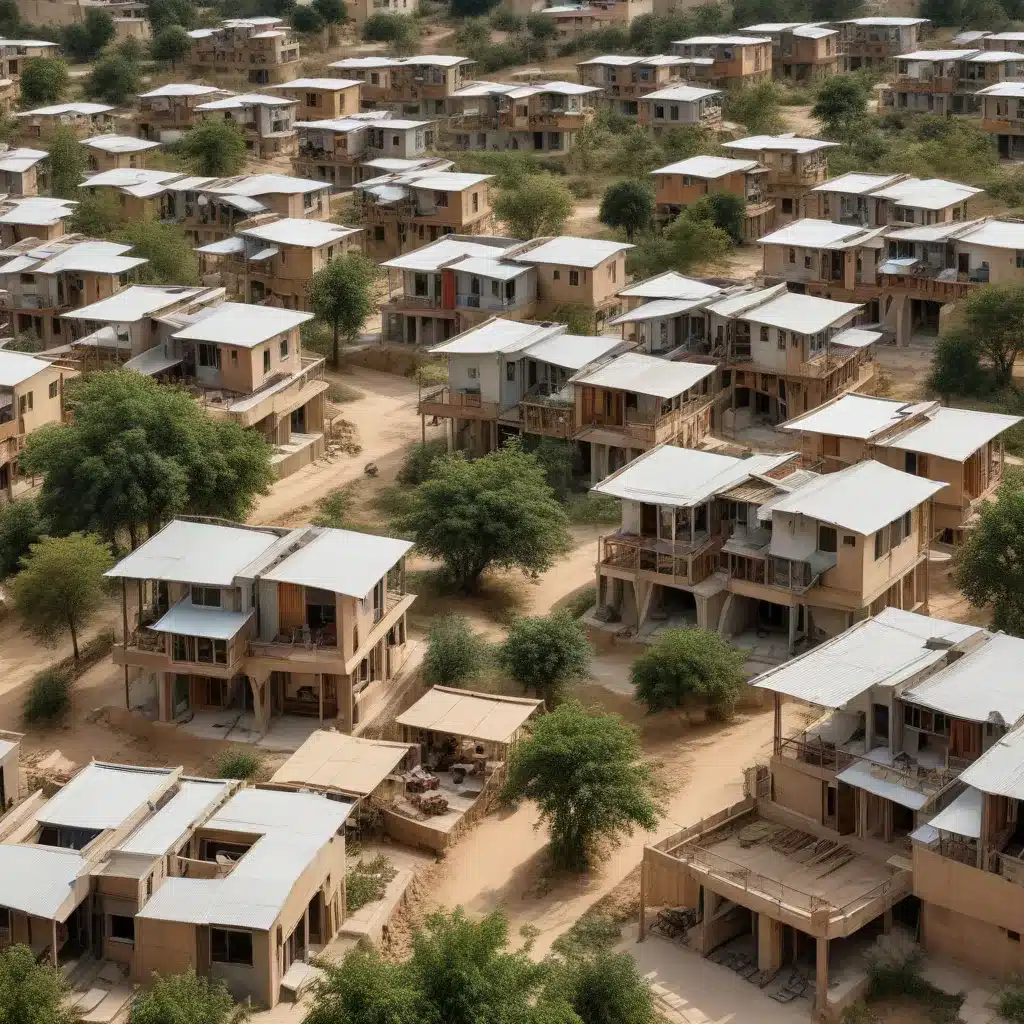
The world is undergoing an unprecedented surge in urbanization, with the fastest growth happening in low- and middle-income countries across Africa, Asia, and Latin America. By 2050, these regions are expected to be home to over 6 billion urban dwellers—a staggering 68% of the global population. This rapid and unplanned urbanization has put immense strain on cities’ infrastructure, resources, and the environment.
Rapid Urbanization: Cities in the Global South are growing at breakneck speeds, often without the necessary planning, financing, and governance capacities to provide basic services like housing, water, sanitation, and energy for all residents. Informal settlements and slums now house a third of the urban population worldwide, lacking access to essential amenities. This urban services divide traps marginalized communities in cycles of poverty and environmental degradation.
Limited Resources: Cash-strapped municipal authorities struggle to keep up with the surging demand for urban infrastructure. Per capita budgets in many developing cities are orders of magnitude lower than their wealthier counterparts, hindering their ability to invest in sustainable, resilient development. Constrained by scarce funding, cities often prioritize quick, cheap solutions over long-term, holistic approaches.
Socioeconomic Disparities: Urban growth in the Global South is marked by deep socioeconomic inequalities. Affluent neighborhoods enjoy modern, resource-efficient buildings and infrastructure, while low-income settlements make do with substandard, informal housing and services. This uneven development perpetuates cycles of exclusion, depriving marginalized communities of opportunities to thrive.
These intersecting challenges require a paradigm shift in how we approach urban development in rapidly expanding cities. Sustainable architecture can be a powerful lever to address the pressing needs of growing urban populations while also mitigating environmental impacts. Innovative design principles, building technologies, and socio-cultural strategies are emerging across the Global South, offering replicable models for more equitable and resilient cities.
Sustainable Design Principles
Passive Cooling Strategies: In hot, humid climates, passive design techniques like natural ventilation, shading, and evaporative cooling can significantly reduce buildings’ energy demands for air conditioning. Vernacular architectural styles often incorporate these principles, using locally sourced, low-embodied-energy materials like mud, thatch, and bamboo. For example, the Nubian Vault technique in West Africa constructs vaulted roofs without steel or concrete, relying on the thermal mass of earth to keep interiors cool.
Renewable Energy Integration: Distributed, small-scale renewable energy systems are increasingly cost-competitive and well-suited for decentralized urban settings. Solar photovoltaic (PV) systems, especially when combined with battery storage, can provide clean, reliable power to homes and businesses. Innovative financing models like Power Purchase Agreements enable low-income households to access solar without upfront costs. In Nairobi’s informal settlements, community-owned solar microgrids have expanded energy access while boosting local economic activity.
Waste Management Approaches: With limited municipal solid waste collection and treatment, many cities in the Global South resort to informal, often hazardous waste disposal. Circular economy principles can transform this challenge into an opportunity. For instance, the Waste Impact initiative in Chennai, India, trains informal waste pickers to collect, sort, and sell recyclables, earning steady incomes while diverting materials from landfills. Integrated composting and recycling systems can also turn organic waste into valuable resources for urban agriculture.
Innovative Building Technologies
Vernacular Construction Techniques: Indigenous building practices can provide affordable, climate-responsive solutions. In hot-arid regions, the Nubian Vault technique uses compacted earth bricks to create self-supporting arched roofs without the need for wood or steel. This approach reduces construction costs by 30-50% compared to conventional methods. Similarly, the Handmade School in Bangladesh uses locally sourced bamboo, thatch, and mud to construct classrooms that stay cool naturally.
Adaptive Reuse of Buildings: Given the scarcity of land and resources, repurposing existing structures can be more sustainable than new construction. In Medellín, Colombia, the Parque Biblioteca España transformed a former informal settlement into a vibrant public library and community hub. In Mumbai, India, the Dharavi Barn project converted an old warehouse into affordable housing, while also incorporating renewable energy, water harvesting, and urban farming.
Novel Building Materials: Innovators are developing low-cost, eco-friendly alternatives to conventional construction materials. Compressed earth blocks, for instance, use local soil stabilized with a small amount of cement or lime, producing sturdy, insulating bricks. Mycelium-based composites, grown from fungal networks, offer a biodegradable, fire-resistant substitute for synthetic foams and plastics. These novel materials can reduce embodied carbon while creating economic opportunities for local producers.
Socio-Cultural Considerations
Community Engagement: Sustainable architecture in the Global South must be deeply rooted in local contexts and responsive to community needs. Participatory design processes engage residents, especially marginalized groups, as active collaborators rather than passive beneficiaries. In Durban, South Africa, the Cato Manor Development Association co-created affordable, culturally appropriate housing with the input of slum-dwelling communities.
Preserving Local Identity: Maintaining traditional architectural styles and building techniques is crucial for preserving cultural heritage and celebrating diverse identities in rapidly modernizing cities. In Rajasthan, India, the Barefoot College trains rural women to construct energy-efficient, earthquake-resistant structures using local materials and methods. This approach upholds vernacular aesthetics while improving living conditions.
Inclusive Design Practices: Sustainable architecture must cater to the diverse needs of all urban residents, including women, children, the elderly, and persons with disabilities. In Nairobi, Kenya, the Mukuru Special Planning Area project developed inclusive design guidelines to ensure equitable access to public spaces, housing, and services within informal settlements. This holistic approach fosters a sense of community ownership and pride.
Confronting the challenges of urbanization in the Global South will require a multipronged approach that seamlessly integrates sustainable architecture with broader efforts to improve infrastructure, strengthen governance, and empower marginalized communities. By drawing on local knowledge, embracing innovation, and prioritizing social equity, cities can chart a path toward a more sustainable and inclusive future. The innovations emerging from these rapidly urbanizing regions offer valuable lessons for cities around the world as they strive to meet the needs of growing populations while safeguarding the planet.







